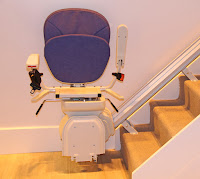How do you deal with pet care issues when your aging loved one is losing the capacity to care for them?
And the eventuality of a permanent new home.This can start with needing assistance with feeding, walking and cleaning up after the pet. It can also affect the finances of your loved one. Do they need assistance paying for food or medications? Does the animal need expensive medical attention? There are volunteers to assist with some of these tasks, and local vets often offer discounts and assistance for seniors. The unconditional love and affection as well as emotional support of pets can be most beneficial to your aging loved ones and maintaining these relationships for as long as possible is important.
Like any other part of their lives, you will need to incorporate the pet care issues into your overall plan for transitioning your loved ones through the late stages of their lives. Doing what's best for everyone is always a priority, but there may be some very difficult decisions to be made.The goal is to make this process as painless as possible.
In most instances pets are considered family and the commitment is real. This is the ideal scenario when adopting a pet and needs to be considered when it comes time to making new arrangements. Decisions must be well thought out and aimed at the best possible solutions. As you know already, or will discover with this journey, things can change on a dime and the plan must flex. You always need to have Plan B in the back of your mind.
Options to consider:
- One of the best solutions would be to be able to absorb the pets into your own life or perhaps the life of another close relative or close family friend. If the pet is familiar with the people and the environments, it can ease their transition and potentially eliminate future problems. This is not always possible for any number of reasons. If this is the solution you have in mind, always keep pace with any changes that can affect the plan. This could include, the adoption of other pets, change in housing situations that might prevent them from incorporating the pets into their household and lifestyle, changes in health status of the potential new caretaker.
- Explore other options to re-home the pets through breed or non-breed rescue organizations and determine their availability, their rules and specifications, and an idea of how quickly they can help make the move possible. Again you'll need to keep pace with any changes in their situations. Never assume that it'll be your option months down the line.
- Contact local veterinarians for resources and ideas on where and how to find help with caring for a pet and when the time comes, help to best re-home you loved one's pets. Keep in mind that it's always a good idea to ask a re-homing fee to ensure the pets are wanted and being committed to and not being lured into nefarious situations. This can be discussed further once you've decided on a new home and feel confident it's a good situation, but don't advertise as "Free to good home."
- Post your needs situation on local social media sites such as the Next door app or local Facebook groups to see what interest you can elicit. Be aware that this won't be the most popular move with some. You'll get criticism, but there may be that one gem who is looking for a new companion and you just touched their heartstrings.
- If your loved one is on home health or hospice services, explore pet care or placement assistance with them. Some agencies run a foundation to assist with pet care and placement. The social workers at these agencies are usually a wealth of information and resources to help you find a solution.
Make sure the pet's vaccines and licenses are up to date and you disclose any health conditions to the potential adopter, rescue or shelter.
As a least desirable option, a no-kill shelter surrender may be necessary.
Additional options can include a trust fund set up by your loved one to help pay for feeding and and medical care for the animals. This can be helpful for anyone willing, but hesitant because of the financial commitments.
Most importantly, planning for this eventuality is a must to help make the heart wrenching transition smooth and successful for all.
For additional reading:
https://www.humanesociety.org/resources/need-find-your-pet-new-home
https://www.petfinder.com/pet-adoption/dog-adoption/dog-rehoming/
Photos from Deposit Photos






